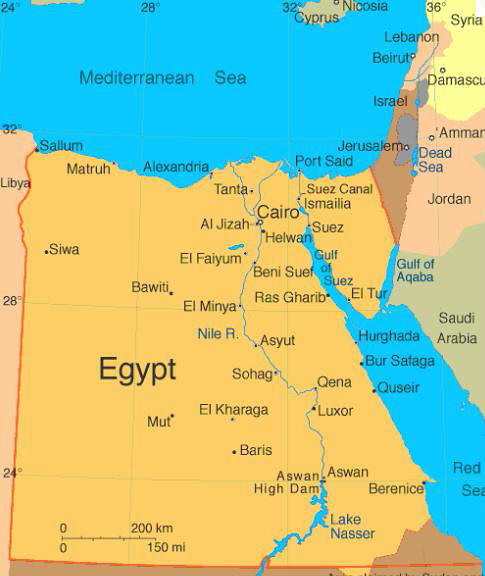
Tuesday, February 2nd, 2010
15 minutes Milwaukee to Chicago, 4 hour layover, 7 hours Chicago to...
Wednesday, February 3rd, 2010
...London, 3 hour layover, 4 hours London to Cairo.
Egypt is one big beach. Without the water.
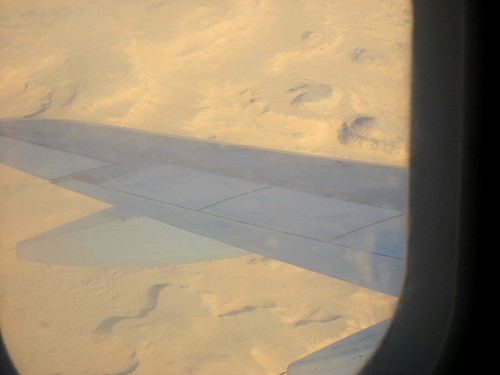
The traffic created hour airport-to-hotel drive introduced the first images of Cairo.



The following shot shows something 80% of buildings in Egypt feature:
1) Upper stories with no windows.
2) Rebar sticking above the top floor.
3) Unfinished concrete pillars.
4) Piles of rubble.
Why? These buildings aren’t ‘finished’ so they don’t have to pay property taxes.
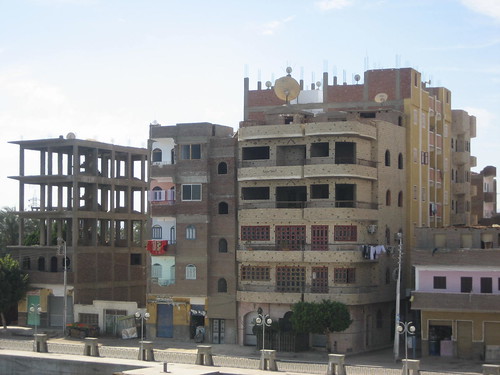
Thursday, February 4th, 2010
It was amazing to see the last existing of the Seven Wonders of the Ancient World.
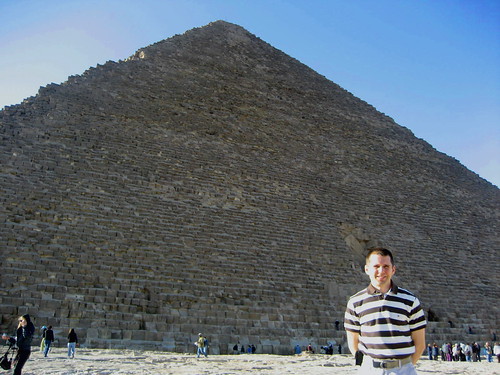
Just imagine the Pyramid of Khufu was built over 4500 years ago.
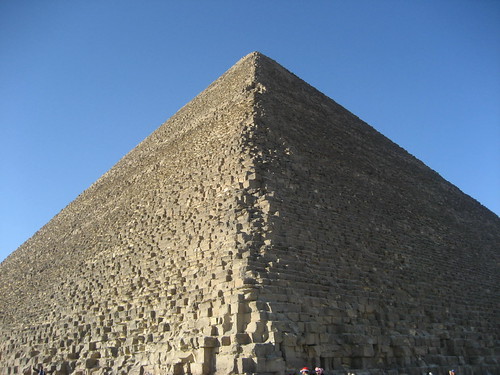
Photographs usually trim out the parking lots of tour buses. The Pyramid of Khafre still retains some of the original limestone coating.
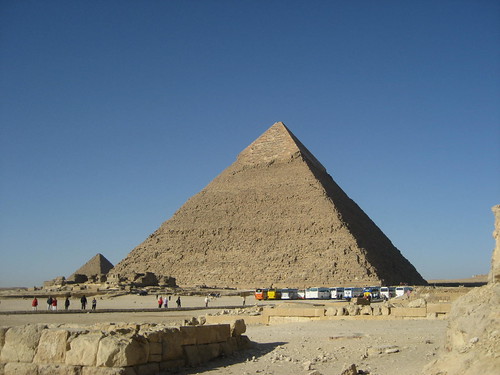
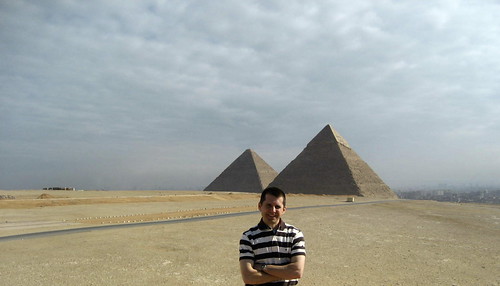
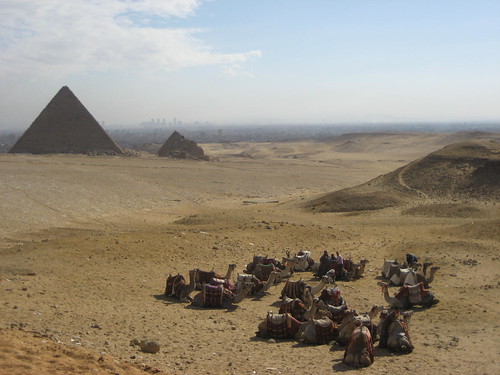
The Great Sphinx was buried in sand until the 1920s.
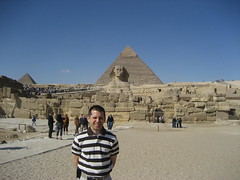
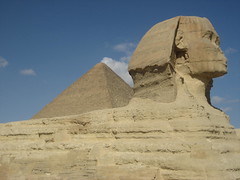
Rosemary chicken turning on a spit greats you upon entering the al fresco Andrea.
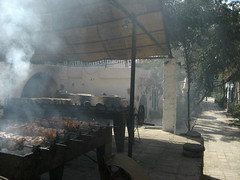

Indigiouness excellence with Eesh baladi, fava, tahini, taamiya and wara einab.

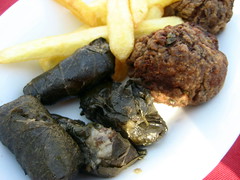
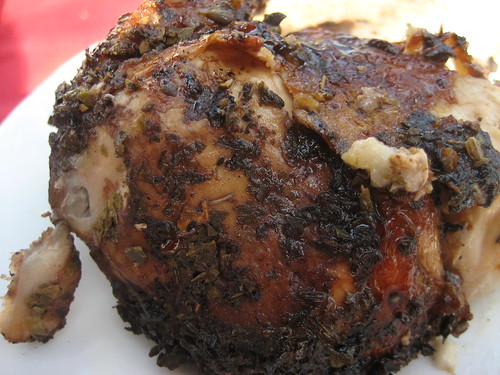
The Egyptian Museum makes up for in priceless artifacts what it lacks in refinement, lighting and repair. Sadly no cameras were allowed inside. Among the 2 floors of remarkable collections is the entire treasure from King Tutankhamun’s tomb. I stared in awe at his masks, coffins and throne.
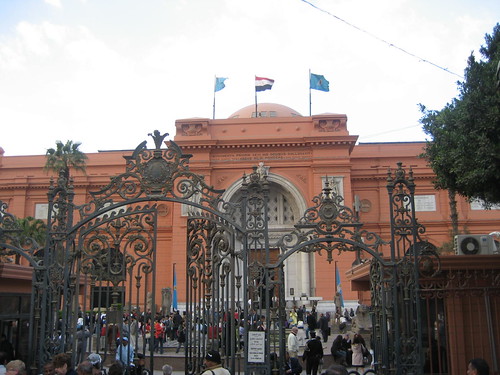
Walked from the museum to the nearby downtown and into mayhem. Cars with surely souped up horns and gaggles of crowds all vied for room on the crowded streets.
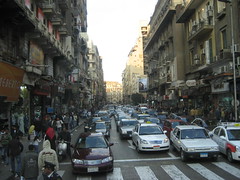
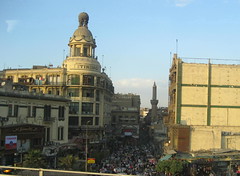
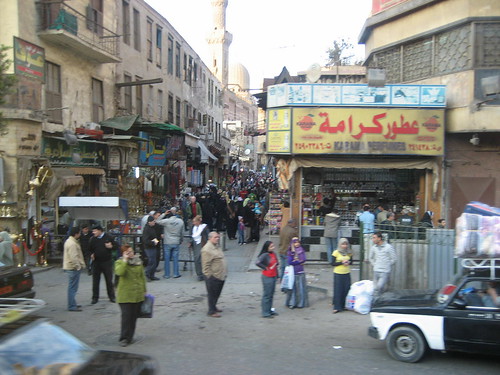

Khan Al-Khalili is a bazaar that dates back to 1382.

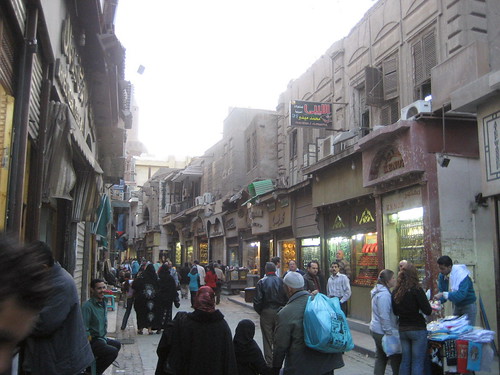
An amalgamation of alleys gets narrower and more primitive the further you delve into the cornucopia of centuries old atmosphere.
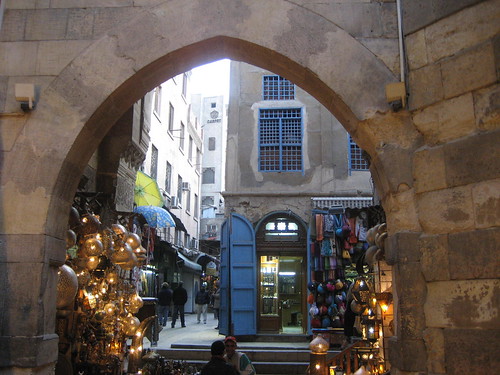
There are fabric shops, machinists, food stalls, jewelry, spices.
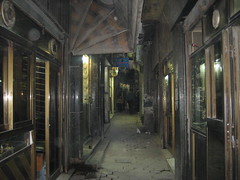
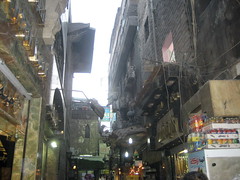
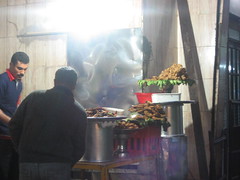
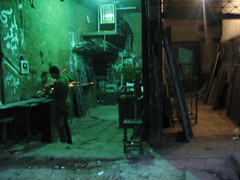
Made a silent transaction for a roasted sweet potato with a smiling gentleman whose leathered face illustrated his advanced age.
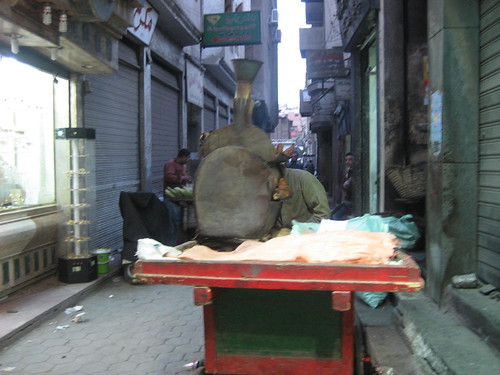
Can’t pass up a bakery!
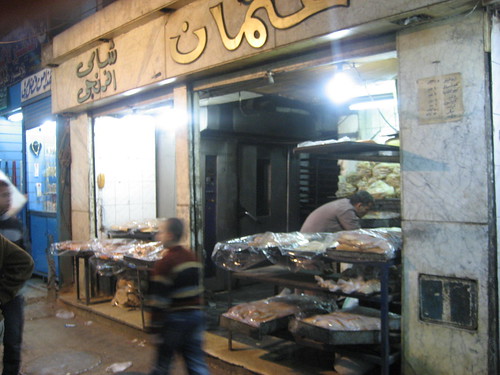
The regular prayer chant rolled over the passageways, as did the wonderful scents of spices.
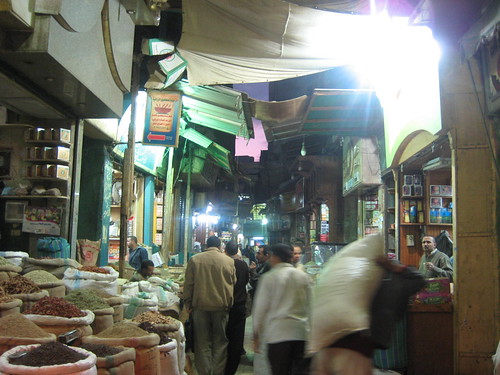
Friday, February 5th, 2010
Flight from Cairo to Aswan took 1 hour and 20 minutes.
The Aswan High Dam was constructed by the Russians from 1968 to 1970 to control the annual flooding of the Nile.
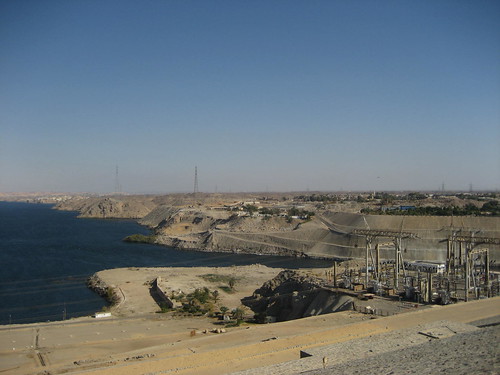
This damming created Lake Nasser covering many historical sites. Some of these were moved including Philae Temple to an island that would not be submerged.
Getting to it was as much part of the ambiance as the temple. Freelance boats vied for passengers in seaworthy questionable vessels that sit very low in the water.

Powered by a 1940s era outboard the trip allows views of surrounding rocky islands. Soon the temple came into view provoking wonder.
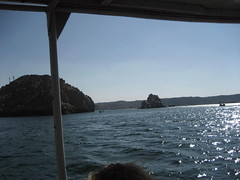
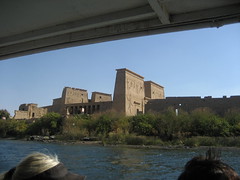
This Ptolemaic complex dates to 380 BC with a storied history of additions even including Greek and Roman intervention.
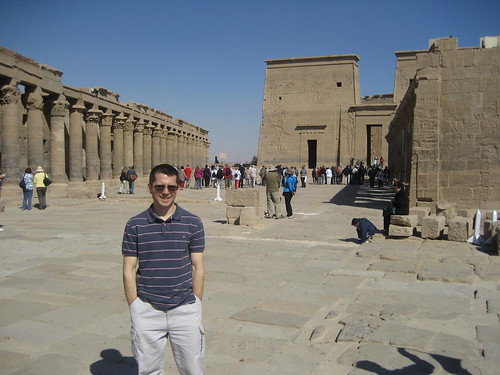
The impression continued during the trip of a astonishment of the ancient Egyptians’ engineering ability, artistry and the intricacies of how hieroglyphics are read. Additionally is not only were hieroglyphics carved but also painted. That paint survives in a lot of places.
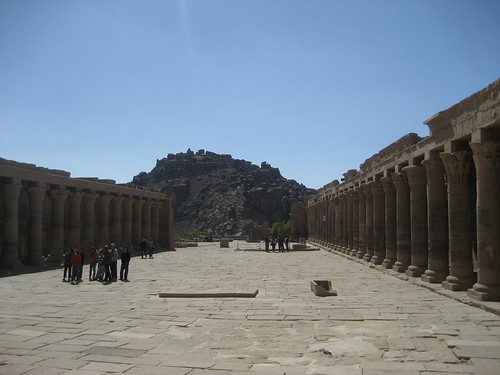
On the outskirts of Aswan is a quarry used in ancient times with an unfinished obelisk abandoned after it was deemed too large not to break.
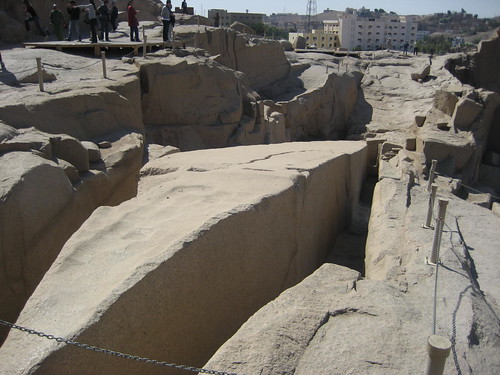
Passed through town along the Corniche to board home for the next 3 days- the M/S Queen of Hansa. There are hundreds of these 4 level river ships on the Nile. Nowhere like ocean cruise ships it was adequate to be a moving hotel.
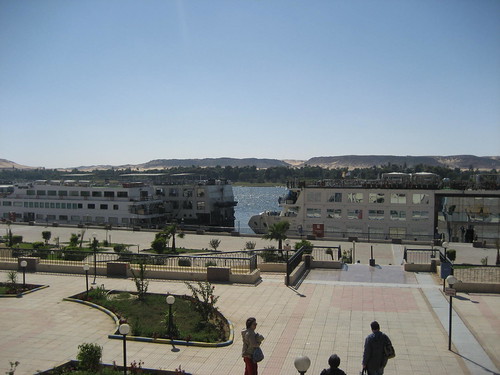
Since it had been 9 hours since breakfast I anxiously hit the buffet focusing on Egyptian dishes like eggplant, Nile trout, and various marinated salads. Oh, and some of all the desserts.

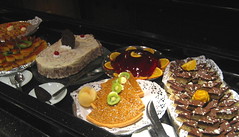
The shipped docked as night fell and Kom Ombo Temple was immersed in a enchanting golden glow.
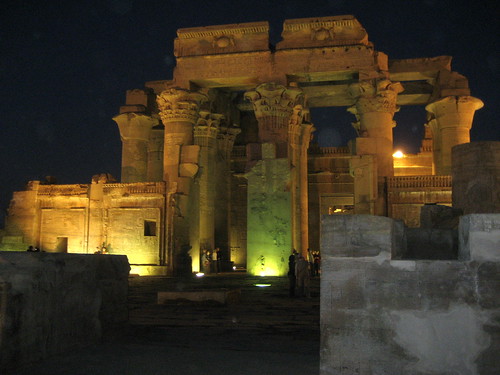
This 145 BC structure included courts, halls, rooms, pillars and unyielding walls exhibiting more of the creative use of construction techniques.
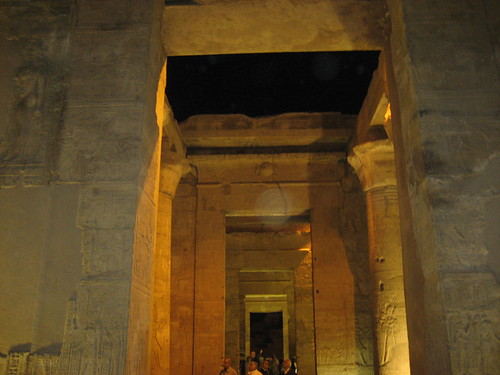
Dinner. Oink.


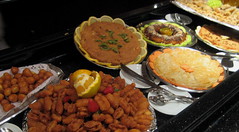
Saturday, February 6th, 2010
At only 7AM Edfu locals were starting their days permitting another window into local life.
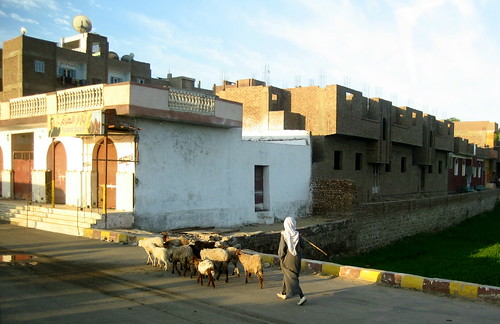
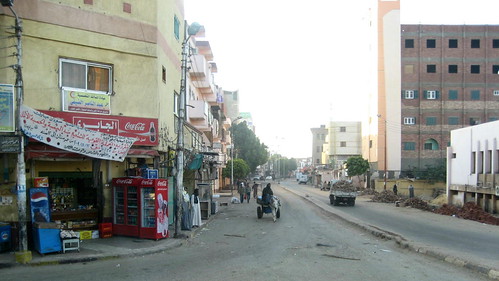
The Temple of Horus has some of the largest pylons left in Egypt.
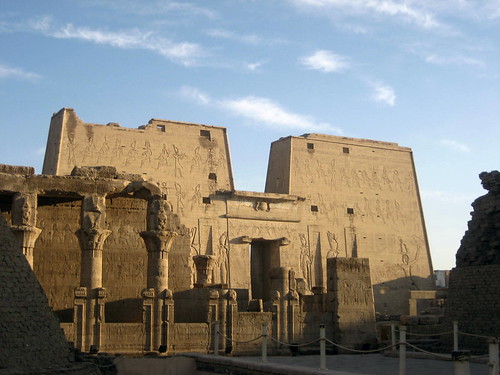
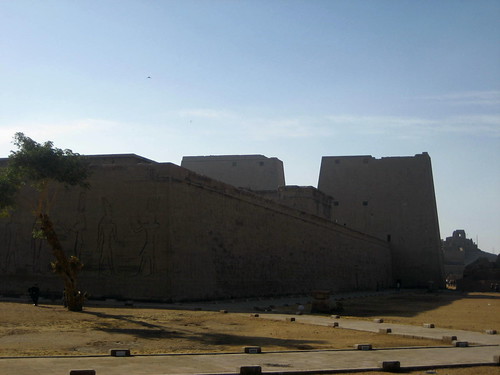
A variety of passageways, alters, courtyards and even underground tunnels provided ample opportunity to explore.

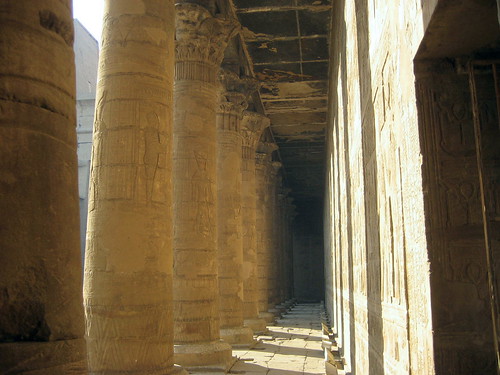
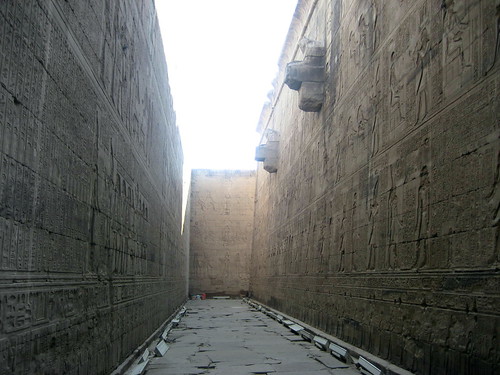
Please look closely at this picture. Soak in the details in the columns. Note each capital is different. Look at every surface covered with carvings and bas relief. See the paint on the upper walls and columns? I can’t even get paint on my house to last for a few years.
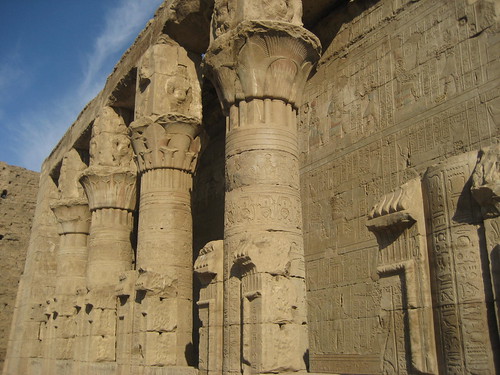
Passing back through town it was in full swing with real life along every block.


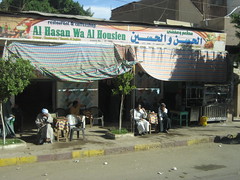
As the ship drifted down the Nile I pulled up a chair to my room’s patio door and took alternating turns reading and watching the shore go by. There were the kids who excitedly ran waved. The father and son fishing. The shanties along the shore. The common link is any of these visions would have looked the same hundreds of years ago.
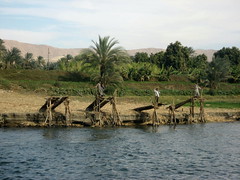

At 5 o’clock the ship docked in the Luxor, the capitol of ancient Upper Egypt, allowing time for a run to bypass the touristy areas and see the real town. The bustle of cars/carts/donkeys. The 2 year old enthusiastically waving at me, “ello! ello!” The ancient men sitting at derelict coffee shops. The teenager who ran up to me grapping my shoulders, “Hurry up! Hurry up!” The dirt alleys showing an abysmal standard of living.
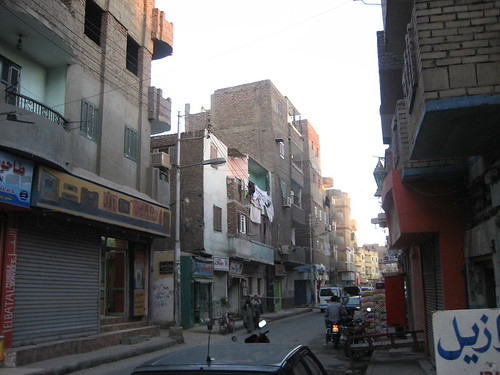
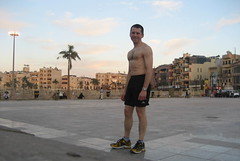

Passing through the poorest areas I wasn’t naïve to be carrying a $300 Canon in a $200 Coach case; hence why there are no pictures of said areas.
These buffets are going to be the death of...

After dinner was the Luxor Sound & Light Show. It had a nice atmosphere with the ancient stones lit up as you moved around listening to the historical narration.
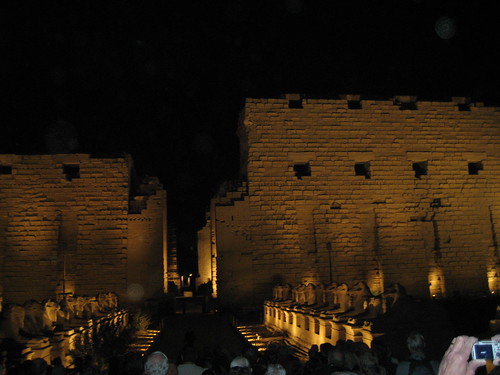
Sunday, February 7th, 2010
Hot air balloons artfully accessorizing the West Bank of Luxor sky.

Cameras are not allowed in the mesmerizing The Valley of the Kings. Located in the vegetation-less mountains of the West Bank these are the final resting places of pharaohs.
The following pictures are lifted off the web. The ability for this civilization to burrow into a mountain is incomprehensible. These tunnels and cavernous rooms, some with barrel vaulted ceilings, have every surface carved and painted. Just imagine being able to do this without electric lights!

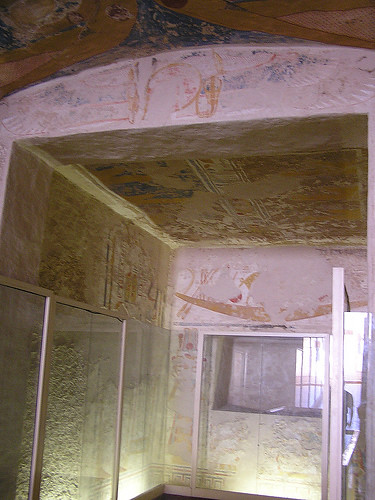


Al-Deir Al-Bahari Temple’s dramatic setting is visible for miles.

The center steps were added for the hordes of tourists.

The following shot shows the still remaining paint you see on so many ruins.
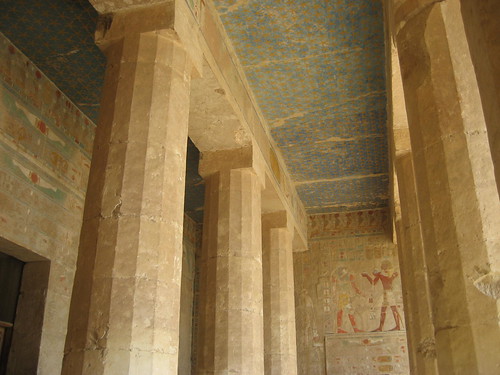
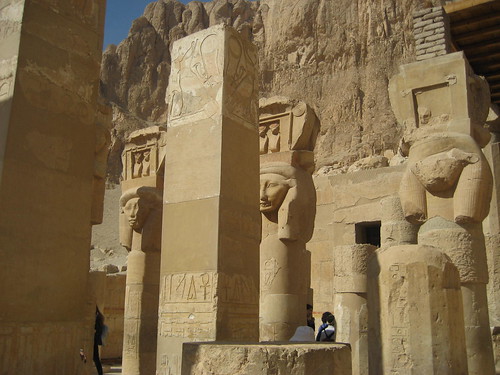
Colossi of Menmon

Need more dessert?
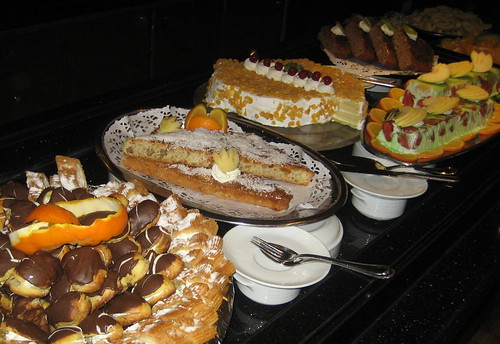
Even being there you cannot grasp the 247 acre complex of Karnak. It includes temples, courtyards, halls, obelisks, a sacred lake and designs to align sunlight onto colonnades.

This model recreates how one part of the complex would have looked.
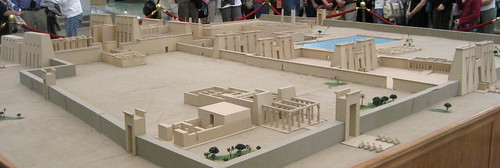
I ambled about amazed and trying to imagine the hoards of experts constructing it and then it being in use.
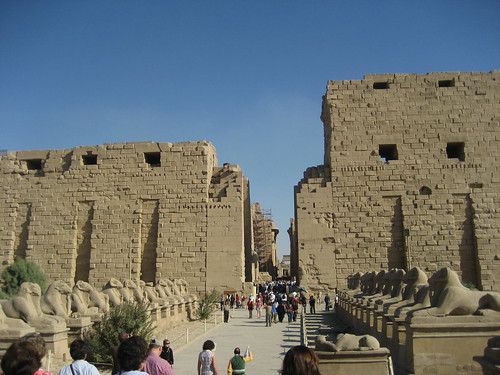
The Precinct of Amun-Re alone has 134 columns 10 feet in diameter and 30 feet tall.

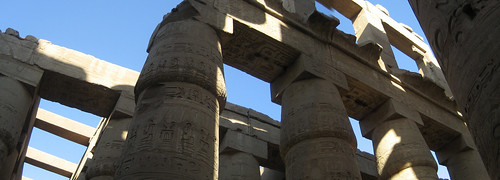
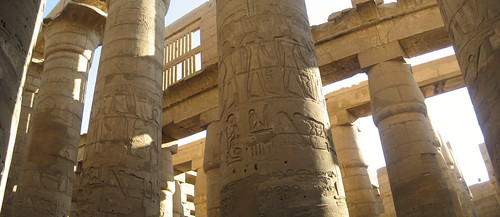
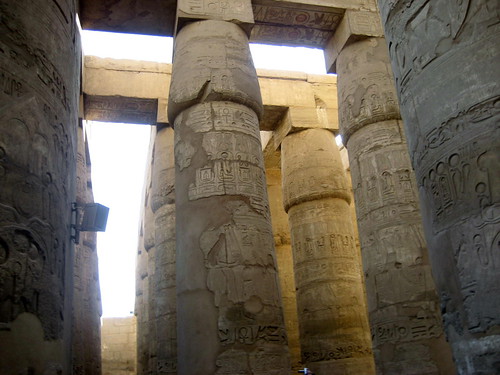
There could be dozens and dozens of more pictures and still wouldn’t show all the astonishing aspects of these ruins.
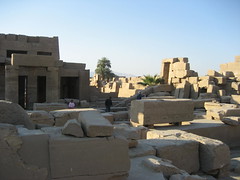

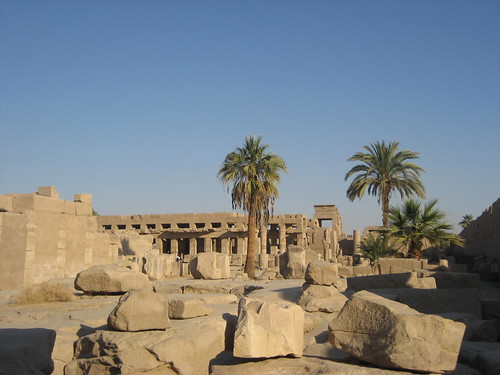
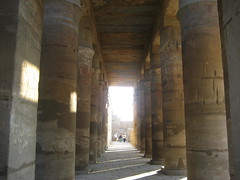

Luxor Temple is best seen at night with the ethereal glow of modern lights.
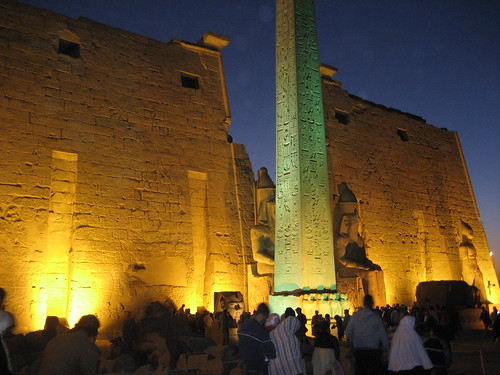
Famous for a statue of Ramses it also has more of those omnipresent columns and pylons.
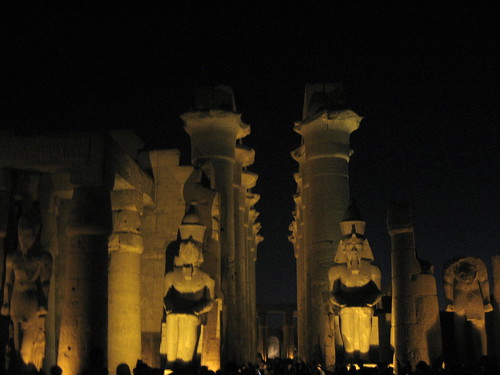
Monday, February 8th, 2010
Got a dense and sweet konafu at the Luxor Airport and then had the hour flight back to Cairo. Stare at the picture on the right for an hour and you've recreated the flight. Better than snow!
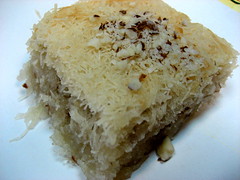

After checking into the airport hotel on the NE part of town it took an hour and ten minutes to get to Memphis south of Cairo. While still in Cairo this journey provided more peering into this sprawling city. Acres of sad poverty of staggering proportions.

The fortress The Citadel.
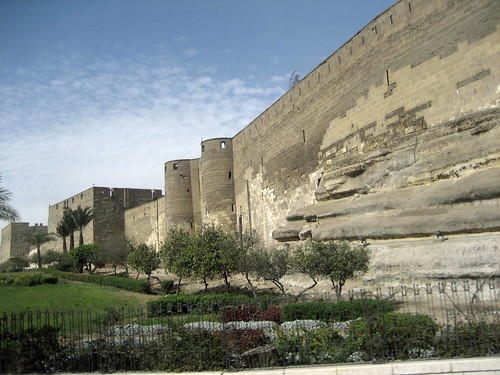
This shows the Pyramids relationship to the creeping metropolitan area.
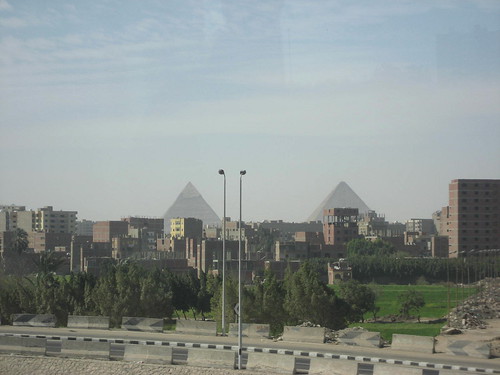
Moving south of Cairo through small rural villages there was an endless stream of images. Kids playing on stairs. Water buffalo pulling a wooden wheeled cart. Produce stands. Garbage strewn alleys.
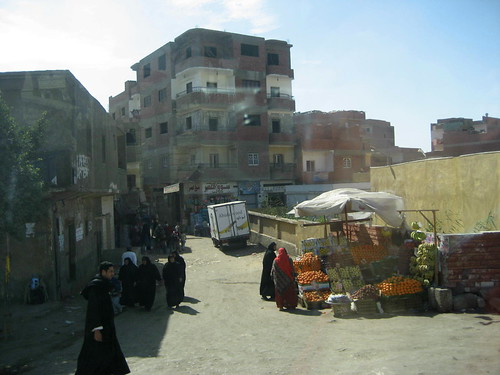


Memphis was an ancient capitol of Egypt and now houses the Memphis Museum- a depository of artifacts from around the country.
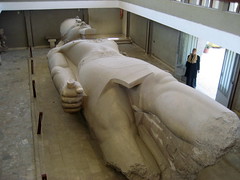
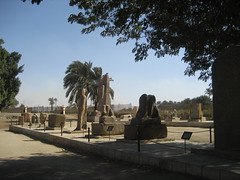
There seems to be a cart or stand of fruit at every corner.
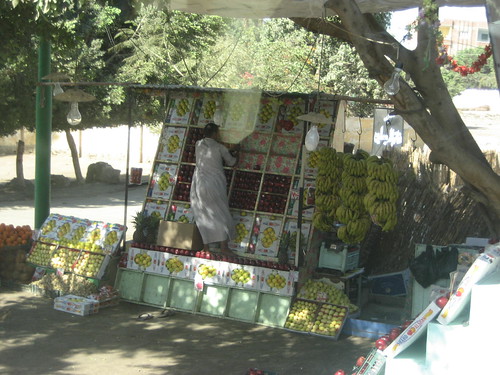
A short drive west is Saqqara, the oldest pyramids of Egypt. An area of extremely fine sand and winds made it a harsh expedition, but worth it to step back 4600 years.


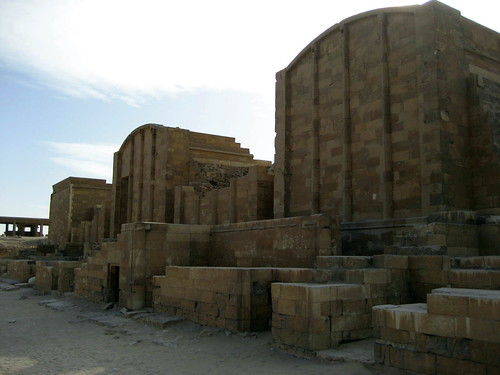
Climbing dunes provided seeing more pyramids along the horizon to the south, west and north.
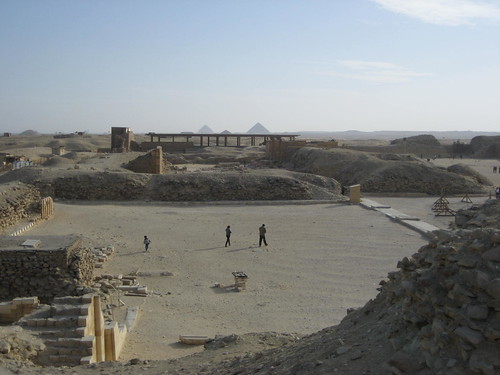
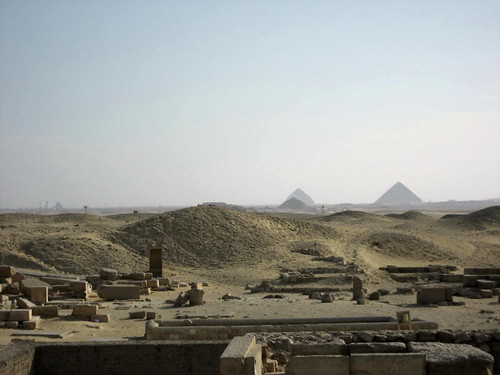
The trip back to Cairo provided more rewarding insights into real life. Can you tell what that is on the left? Garbage.
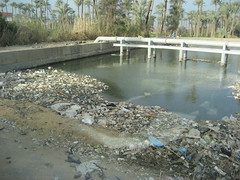
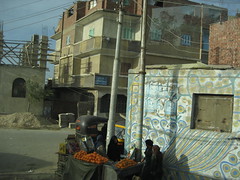
Tuesday, February 9th, 2010
The Iberotel Cairo Hotel & Casino had a respectable breakfast buffet with several stations. I targeted the table of local foods as soon as it was spotted.

At the airport one more stab of local bakery which all featured the common Middle East ingredients of phyllo, honey and nuts.

11 hours Cairo to New York. Five hour layover in New York; including moving from JFK to LaGuardia. The 1 hour 40 minutes flight back to Milwaukee turned into 5 hours due to 15 inches falling on Milwaukee. We had to circle over the lake when the airport closed for plowing, then later land in Madison for fuel and finally back to MKE. Home to shovel and in bed at 2:30AM after being up for 30 hours.
Whew.